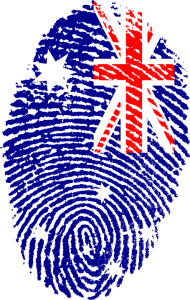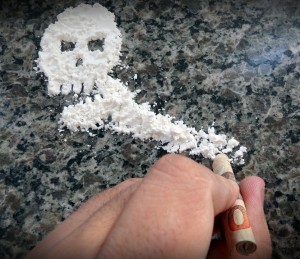Australia Gains Reputation as World Leader in Cocaine use
Cocaine use is on the rise in Australia and has been for years. While in the past cocaine was not the drug of choice for most Australians, economic and cultural shifts have caused many to fall down the white powdery slopes of cocaine addiction in recent years. Read on to find out more about the potential causes, contributing factors, and treatment options.

If you are Australian and reading this article, it may be fairly concluded that you or someone you know has tried illicit drugs. Furthermore, it could also be inferred that over half of you are or know someone who is addicted to illicit drugs. In 2014, more than 40% of Australians reported illicit drug use. This is one of the highest rates of use per capita of any country and the number has been continually rising over the past several years.
Among these illicit drugs, cocaine use has been previously reported as being comparatively low, however, this is changing. The United Nation’s 2014 World Drug Report named Australia as leading the world in the use of the party drug ecstasy, number three in methamphetamine use, and fourth for cocaine use.
This report also names the Oceania market as among the world’s fastest-growing markets for drug sales. In 2010, notorious Sinaloa Cartel kingpin Joaquin “El Chapo”Guzman Loera, described as ‘the most powerful drug trafficker in the world,’ helped set up a cocaine importation business in Sydney. In 2015, 2% of Aussies were using cocaine regularly.
From poppies to powder
From 1995-1999 heroin was a huge problem in Australia. In 1999 there were 1,116 opioid overdose deaths reported among those aged 15 to 54 years old. There were also substantial rises in the number of individuals treated for heroin dependence, arrested for heroin offences, and diagnosed with hepatitis C infections. The future was looking grim for many Australians during this time.
Beginning in 2000 however, something changed. There was a decline in Afghan poppy farming and subsequently, there were reports of an unpredicted reduction in heroin supply resulting in sudden increases in price, diminished quality, and severely reduced availability. The price of heroin nearly doubled in price while the purity went from 60% to 20%. Referred to as the ‘heroin drought,’ this event could have been a saving grace for Australia…until cocaine came to the rescue.
Cocaine and heroin are vastly different types of drugs. Cocaine is a stimulant, whereas heroin is a depressant. However, both are powerful and highly addictive, and now cocaine was far easier to access and cheaper than heroin. Drug dealers jumped at the opportunity to introduce cocaine to vulnerable and hungry addicts and since the early 2000’s the use of cocaine in Australia has steadily increased with most dramatic impacts being felt in the past 4-5 years.
From 2011-2012 the number of cocaine interceptions at Australian border points doubled and in 2014, it was reported that cocaine dealers in Sydney were making up to $50,000AUD a week, selling to eager addicts willing to pay steep prices for the drug.
Economic factors
A number of factors might be contributing to the apparent rise in cocaine and other drug use in Australia. Australian Drug Law Reform Foundation president Dr. Alex Wodak has speculated that it is largely the result of a mash-up of economic and social conditions. At this time in Australia, there is a pronounced economic disparity between lower and upper class citizens that has paved the way for indiscriminate drug use. Perhaps the scariest reality is that the appeal of cocaine seems to be universal in Australia, effecting old, young, wealthy, and poor.
The younger generation is experiencing economic success, fueled by and celebrated with cocaine. Many older Australians however, are suffering experiencing heightened competition for jobs and rising unemployment. According to national figures, people over 50 showed the largest rise in illicit drug use in 2013. Ninety-one year old Victor Twartz of Sydney was arrested in August of 2015 after customs found 4.5 kilos of cocaine hidden among bars of soap in his luggage. In the near future, the younger generation might also find themselves at risk for sudden unemployment or depression once this economic bubble bursts, undoubtedly resulting in the widespread of cocaine use.
Despite the fact that cocaine appeals to a wide range of people, it is still considered a ‘luxury item’ and a higher class drug than meth, another widely popular drug that has hit Australia by storm in recent years. One respondent of the Global Drug Survey of 2015 was reported, ‘”It’s a luxury item here [Australia]. People who’ve got lots of money use coke and if you’re on benefits and doing crime you do crystal [methamphetamine].” Australians currently pay the highest prices in the world for cocaine, 230-430 AUD per gram depending on quality.
Social factors
 ‘It’s a social thing.’
‘It’s a social thing.’
‘I can’t turn it down when everyone else is doing it.’
‘It’s everywhere, you can’t avoid it.’
‘I need it to stay up.’
Despite its steep price, social factors for cocaine use may include low socioeconomic status, low education, influence of peers, easy availability of drugs, or working or living in a place that has high crime or drug use. Sydney has been named as the capital city of cocaine use in Australia.
According to the National Institute on Drug Abuse in the United States, the highest number of cocaine users are male of Caucasian ethnicity, and late adolescent age. Men are considered more likely to develop cocaine dependency while women are thought to experience more cravings, depression, and social and family problems as the result of abusing cocaine. Interestingly, women are more likely to seek treatment than men.
The role of social media
Dr. Wodak of ADLRF believes that social media plays a large part in the spread of cocaine use and he is not alone. Tales of Aussie footballers attending lavish parties and publicized celebrity arrests (and prompt releases) for cocaine possession riddle Facebook and other media sources on an almost daily basis, sending the message to adults and youth alike that cocaine is not only cool, it’s also ‘not that big of a deal.’
Shockingly, drug are also being bought and sold over social media. Promising fair prices, top quality, and door-to-door delivery, cocaine is literally one click away throughout Australia. In 2015, New South Wales police announced they had made 21 arrests after a two-month operation targeting the sale of illicit drugs online via classified advertising websites, social media platforms, and the dark web.
Time for action
Unless there is a sudden decline in cocaine production, a highly unlikely occurrence considering the fact that it is a multi-million dollar industry that dominated Central and South America, Australians are going to have to take some action.
Executive Director of the Australian National Council on Drugs Gino Vumbaca partially blames authorities for relaxing in their fight against drugs. According to him, the battle was being won ten years ago when issues regarding drug use were so rampant they were unavoidable. Apparently, now that drug use has popularized and mainstreamed, and people, including law officials, are for some reason less sensitive to it or concerned with it than in the past.
Treatment options
So the drug isn’t going anywhere and it seems that the government is out of ideas also, where does that leave addicts? Fortunately, with an increased number of individuals dealing with cocaine dependency, Australia is continually expanding their treatment options and new facilities are opening up all over the country.
In 2012, around 110,000 clients received almost 162,400 treatment episodes from 714 publicly funded alcohol and other drug treatment agencies across Australia. In 2013, around 119,000 clients were estimated to have received over 180,700 treatment episodes from 795 publicly funded alcohol and other drug treatment agencies – an obvious increase in both the number of individual treatments and the number of agencies administering treatment. This trend is expected to continue as the use of cocaine and other drugs including meth rises in the future.
You are not alone
If you or someone you know is being affected by cocaine dependency, it is important to know that you are certainly not alone, and also the problem isn’t disappearing on its own. Contact us today for information on a range of resources and treatment options available.
